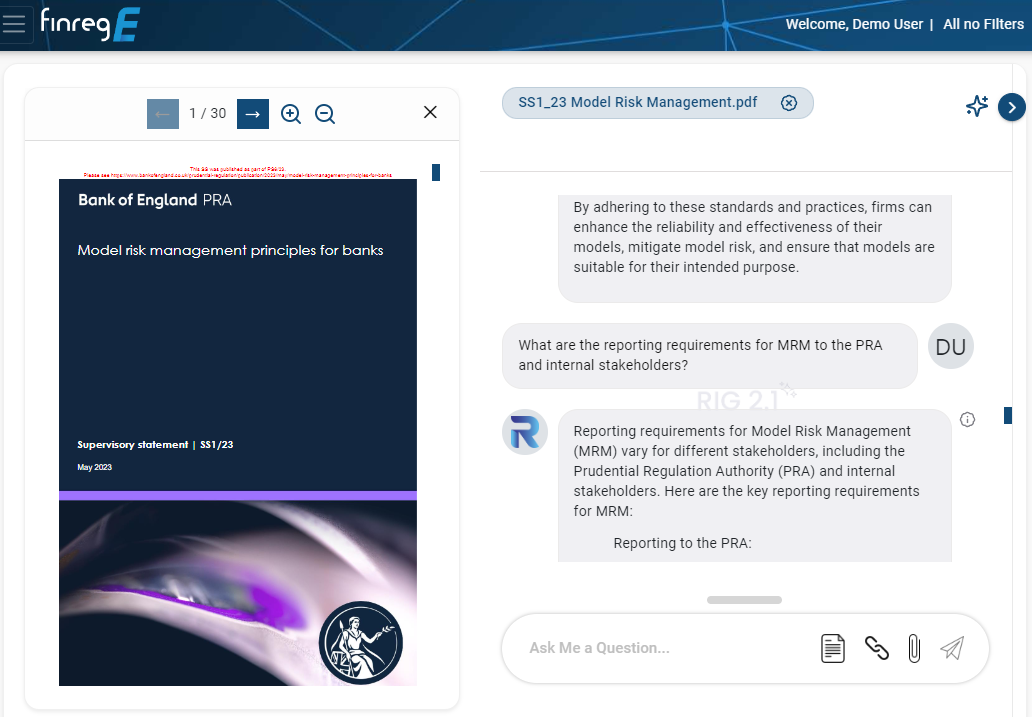Regulatory frameworks or compliance frameworks are critical for implementing financial regulations effectively and ensuring that all business units or departments comply to prevent costly penalties and fines. However, most compliance frameworks are incomplete because they lack operational resilience.
Operational resilience, an organisation’s ability to prevent, respond to, recover from, and learn from operational disruptions, is a critical component of compliance management. Yet most organisations do not seem to have built-in resilience into their company operations.
However, integrating resilience into compliance management into regulatory frameworks can generate significant benefits for the organisation in question because it helps organisations withstand or even prevent a compliance violation, which bolsters their reputation. Moreover, it is a sign of an organisation with a mature compliance process.
In this blog, we explain how you can build resilience into compliance management programs by making appropriate changes to compliance frameworks.
The importance of building resilience into compliance management programs
Resilience is crucial for ensuring that organisations minimise the regressive impact of operational incidents. An operational incident can lead to a significant impact that could disrupt entire systems.
As an example, a data breach could cost an organisation over $3.92 million to repair. Furthermore, incidents that warrant a breach in compliance have become more frequent. A study from McKinsey and Company revealed that over 350 operational risk incidents took place, amounting to fines of over $23 million. Critically, the sample revealed that the total returns to shareholders fell by over $278 billion due to a loss of value from business operations.
Moreover, an operational incident can lead to a loss in reputation, fines, and reduced enterprise value, which can depreciate the value of an organisation, making it harder to achieve growth targets and other business goals.
Trust is a critical component of doing business within the financial industry, and if organisations have lost their ISO certification or been fined for a breach, then it is difficult to move forward with business initiatives in the future.
Building resilience into compliance management initiatives can help organisations detect and avoid a potential breach, prevent serious financial disasters and keep their business reputation intact through more comprehensive compliance procedures.
Improving compliance management programs through resilience
Expanding resilience into compliance management programs requires organisations to make the following tweaks to their regulatory frameworks.
Assess how critical services affect internal operations
Preparing an operational resilience program requires organisations to identify key business services that could cause substantial harm to the organisation if disrupted.
Understanding what this study entails requires a complete assessment of this internal service, covering systems, processes, and what stakeholders are involved in, and using this knowledge to construct a map that clearly explains the service’s connection to organisational hierarchy, supervisory goals, and business objectives.
With these insights, organisations can identify strategic/critical initiatives and risk exposure levels, along with dependent processes, people, systems, and related third parties that could impact business objectives.
Establish impact tolerance and risk metrics
With so many risk factors plaguing the financial industry, there are plenty of unknown variables that disrupt critical operations and put the organisation at risk. Predicting and preventing unforeseen disruptions is impossible, but what organisations can do is limit risk appetite and impact tolerance by setting strict limits on investments.
Placing strict limits allows organisations to account for value-based, volume-based, and time-based impacts that could destabilise financial operations. Critically, it allows organisations to better understand how risk is connected to relevant areas and processes, giving better insight into impact tolerance.
With this insight, your regulatory team can better understand the risks that could compromise their system and what is done to limit them, improving operational resilience in compliance management.
Record connections and dependencies
With the financial industry changing, it is important to understand how people, systems, processes, and third parties are required to deliver the business services. Understanding the dependencies is critical for improving resilience because organisations can understand internal and external interconnections with a complete picture.
A single of view of dependencies, organisations can highlight areas where they need to be more resilient. When equipped with an understanding of their dependencies is also helpful when it comes to handling third-party providers.
Financial institutions working with several organisations, they need to have a horizontal and vertical view of their depenencies because it would provide deeper insight into how an organisation work.
Build a robust regulatory framework with resilience
Regulatory frameworks are an integral part of compliance management because they inform internal policies and procedures financial institutions follow to should align their operations and meet the requirements set out by regulatory firms.
However, most compliance frameworks lack the resilience to detect and prevent any actions that could result in a violation. Hence, why building resilience into compliance management procedures can be critical for ensuring that financial organisations can head off potential violations, saving millions by preventing violations and poor practices.
In the future, most financial institutions will be placing a greater emphasis on resilience to build a more versatile and flexible compliance management procedure and better anticipate the ups and downs of the financial industry.


